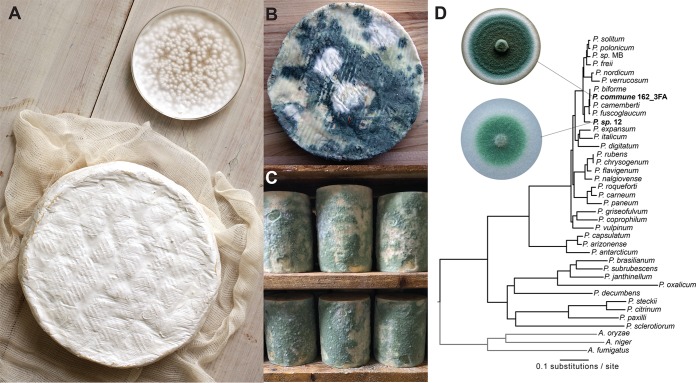FIG 1.
Penicillium molds in the cheese environment. (A) The white mold known as Penicillium camemberti (show in pure culture in the Petri dish) is used to make Camembert (shown), Brie, and other bloomy rind cheeses. (Photo by Adam DeTour and used with permission.) (B) Wild Penicillium molds (also known as non-starter molds) can contaminate cheeses during production. (C) Some natural rind cheeses are intentionally colonized by wild Penicillium molds. Shown here is Penicillium sp. strain 12, a strain used in the experiments in this paper, colonizing wheels of a blue cheese in a cave in the United States. (D) A phylogenomic tree of Penicillium. Strains used in this work are highlighted in bold. Penicillium sp. MB was also isolated from a natural rind cheese and sequenced as part of this work but was not used in the experiments described.

